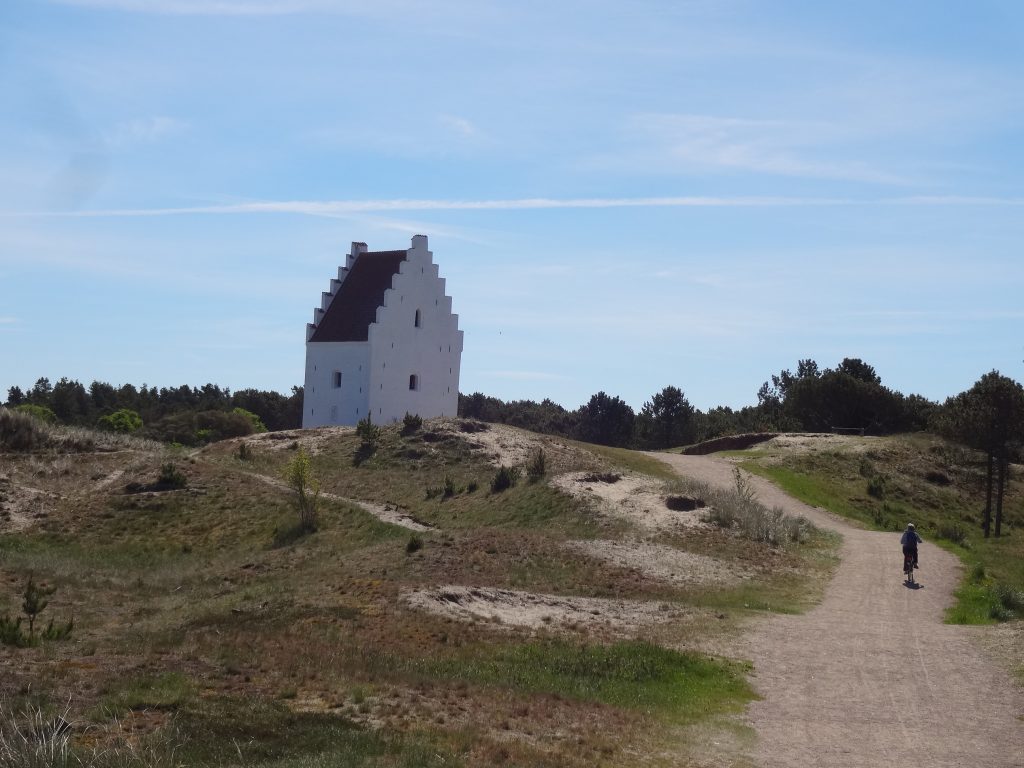Right up at the tip of Jutland is an area often overlooked by travellers in their haste to get to Hirshals in order to catch the ferry to Kristiansand, Norway.
For a start there’s the bustling town of Skagen, a hospitable place with a nice feel to it. Traffic free and with it’s tourist tat shops and many restaurants you could almost feel you were in the South of France. Almost.
Skagen is Denmark’s northernmost town. Occasionally known in English as The Scaw, it is situated on the east coast of the peninsular. With its well-developed harbour, Skagen is Denmark’s main fishing port and also has a thriving tourist industry, attracting some 2 million people annually.
Then there’s the extensive network of cycle tracks through the dunes, not even within earshot of the road. We cycled 20k from our camp at Rabjerg Mile into Skagen along these tracks, through dunes and pine forests. Cycling is enjoyed by all ages, we saw loads of family groups meandering along as well as lycra clad saddle gods flying down the narrow track. We even encountered a hen party, with the usual arrangements of suggestive balloon art.
En route we visited The Sand-Covered Church (Danish: Den Tilsandede Kirke, also translated as The Buried Church, and also known as Old Skagen Church) . This is a late 14th-century church dedicated to Saint Lawrence of Rome. It was a brick church of considerable size, located 2 kilometres (1.2 mi) southwest of the town centre of Skagen, Denmark. During the last half of the 18th century the church was partially buried by sand from nearby dunes; the congregation had to dig out the entrance each time a service was to be held. The struggle to keep the church free of sand lasted until 1795, when it was abandoned. The church was demolished, leaving the tower with crow-stepped gable as the only part of the original structure still standing.
Moving sand, or rather, sand moving itself is an issue hereabouts. just down the road there is a massive pile of sand over a mile long which is known as the Råbjerg Mile. While the majority of dunes have been stabilised by planting, the Råbjerg Mile was left to creep to allow future generations to understand the problem of sand dune drift.
The central area of the Mile and some of the surrounding land was purchased by the State in 1900. However the dune is now drifting out of the government-owned area and this is causing some tension with landowners.
Standing on this dune is very desert like, and we were told on good authority that it’s been used in TV and film to give a desert backdrop.
L says that I still don’t look as good as Peter O’Toole.

